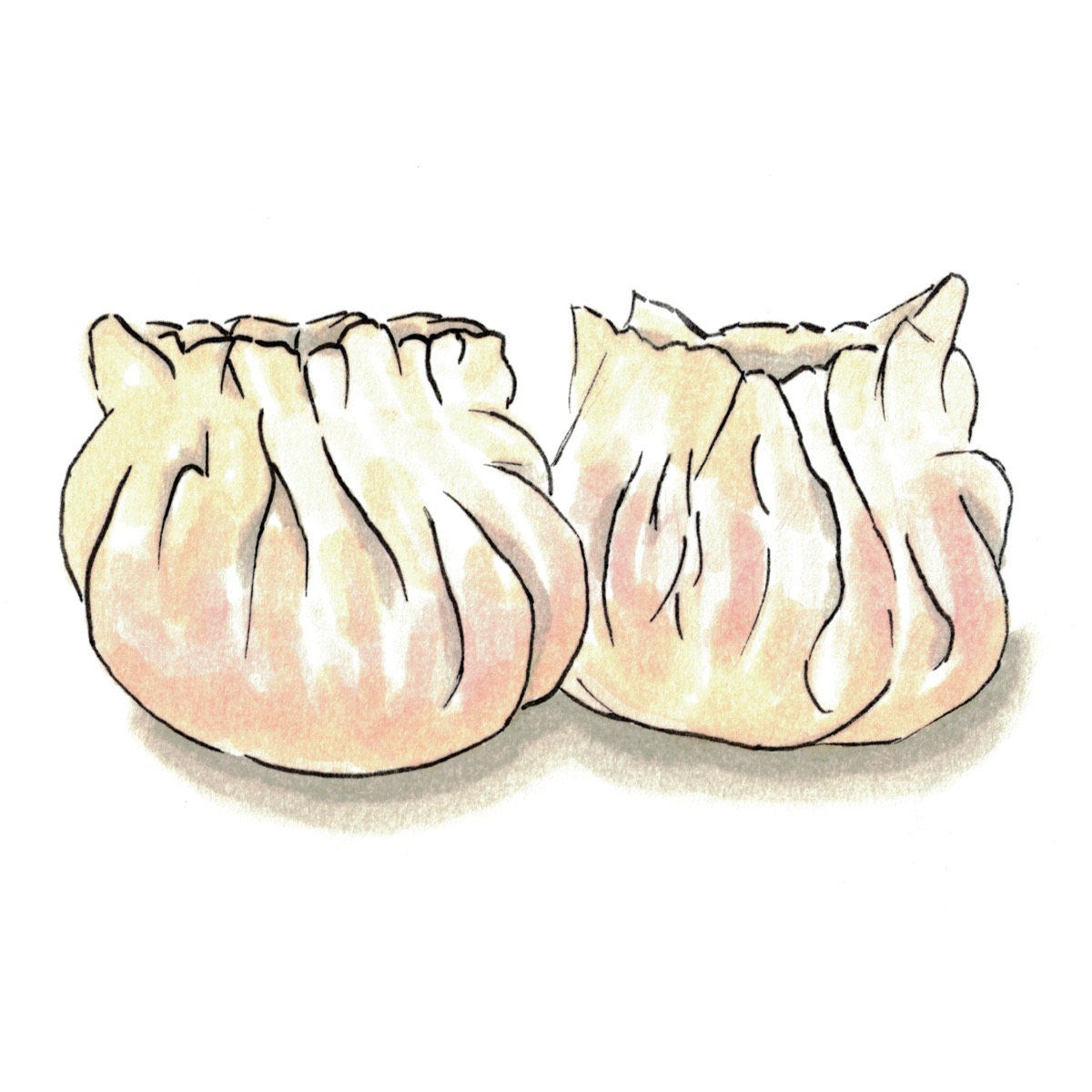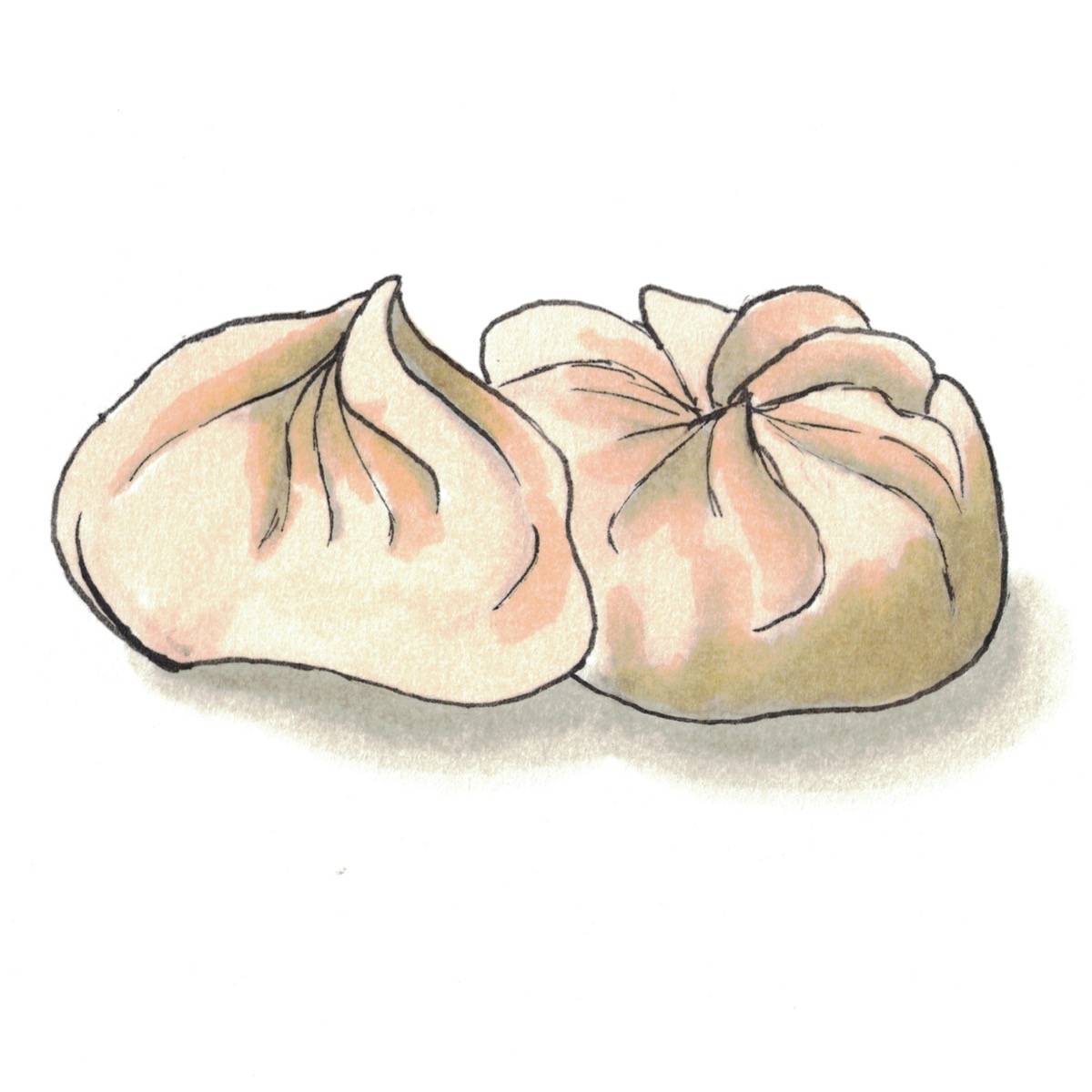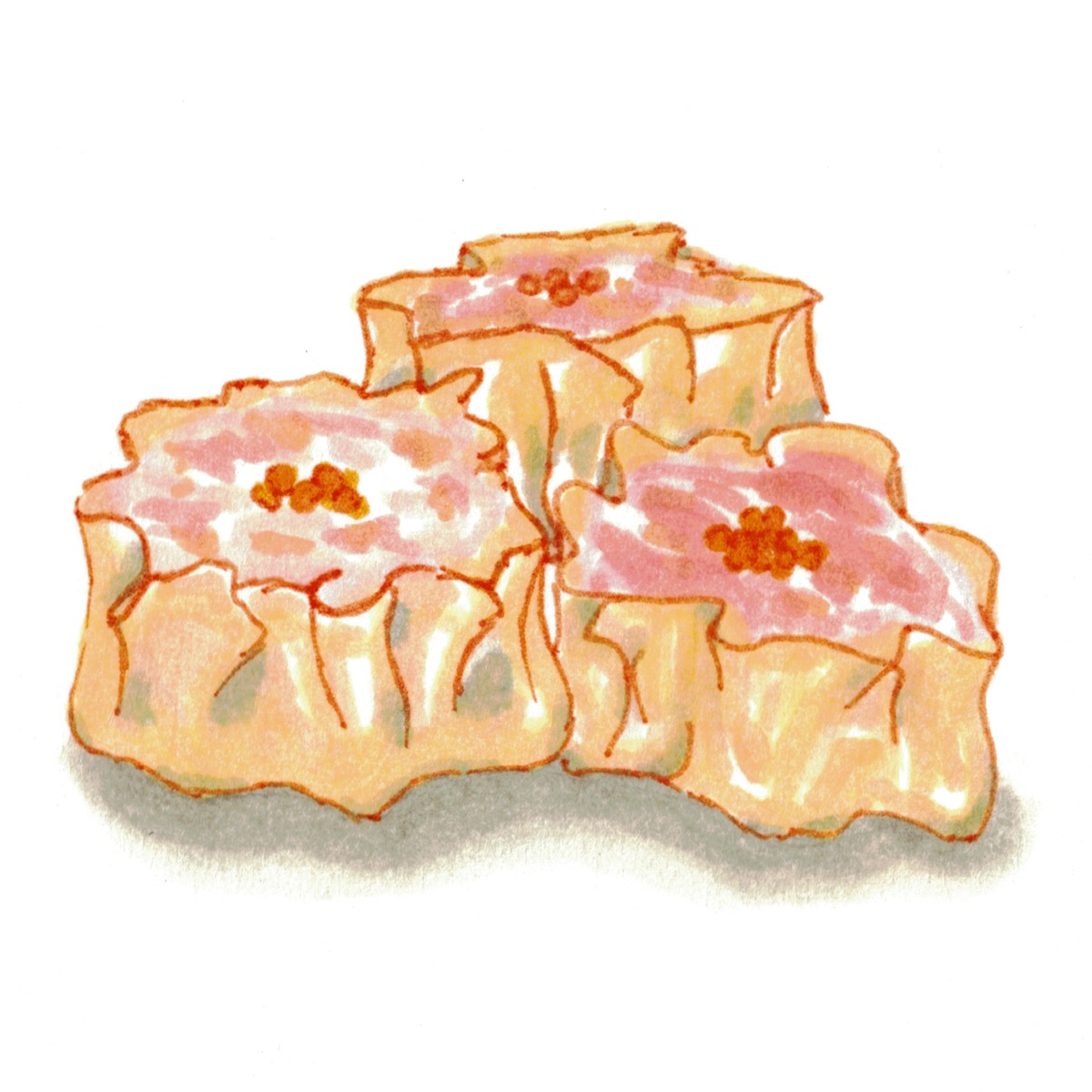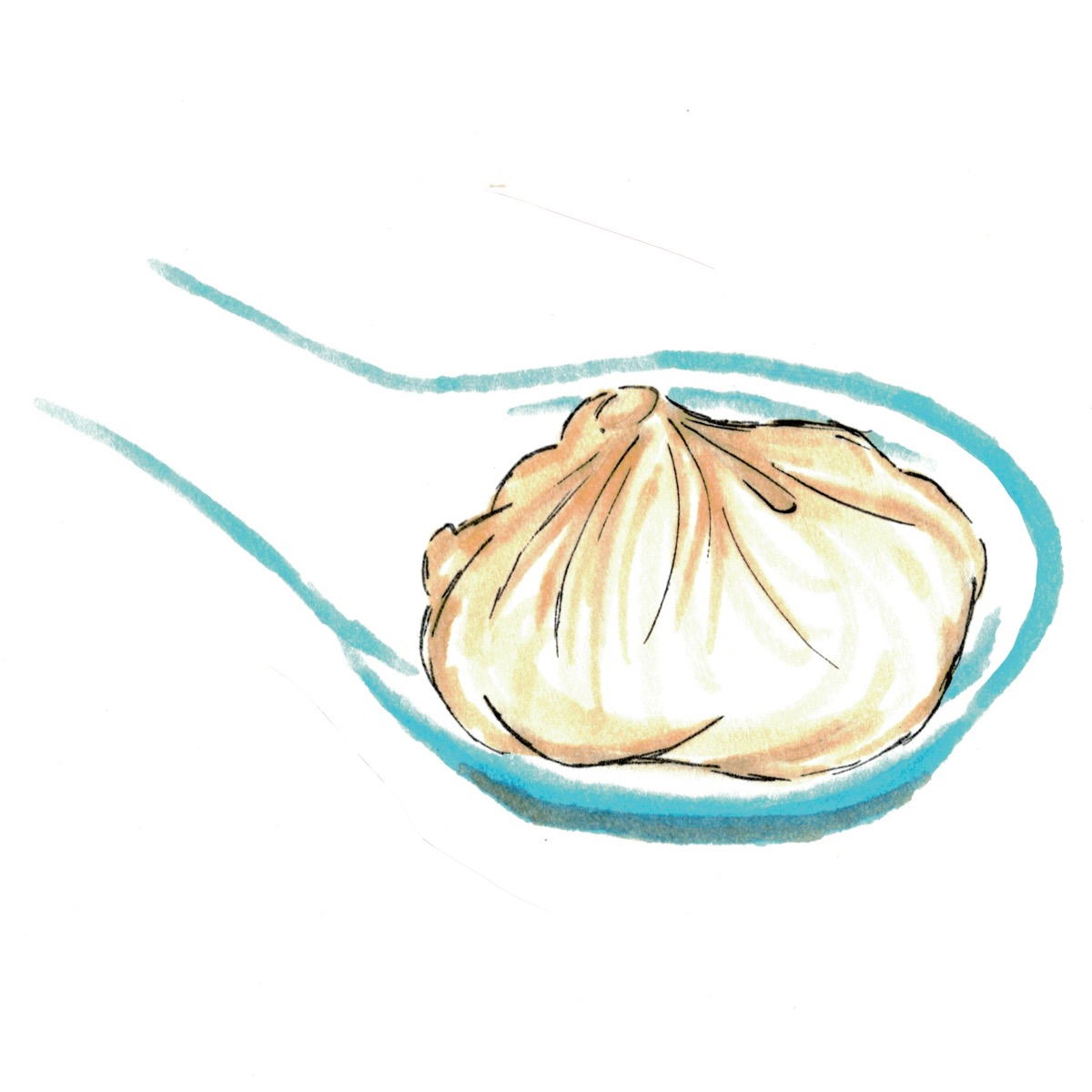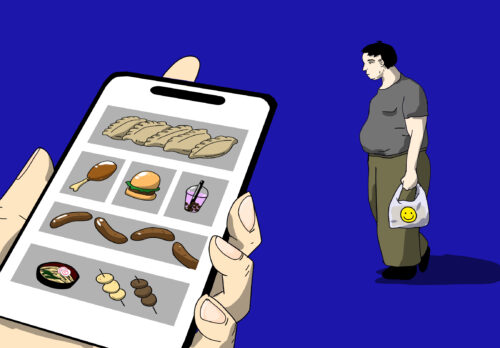From xiaolongbao to siu mai: A primer on the Chinese dumpling
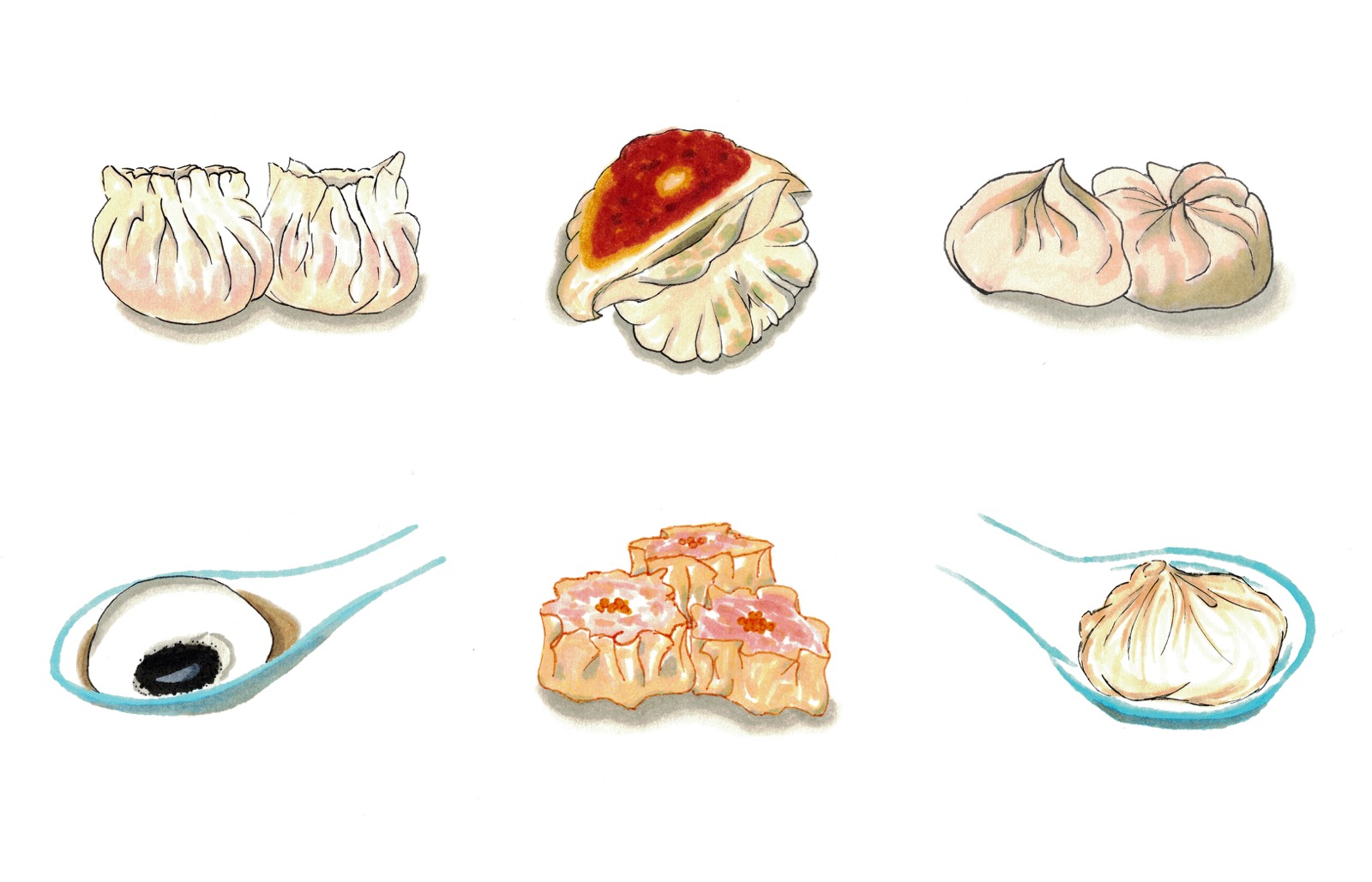
Illustration by Hannah Bae / @eatdrinkdraw
No question about it: Dumplings are a quintessential Chinese dish — delicious fillings stuffed into a thin shell, boiled, steamed, or fried. There are plenty of varieties — dim sum favorites har gow (steamed crystal shrimp dumpling, or 虾饺 xiājiǎo) and siu mai (open-faced dumpling, 烧卖 shāomai); 小笼包 xiǎolóngbāo (soup dumpling); 锅贴 guōtiē (fried pot stickers); 汤圆 tāngyuán (boiled sweet sticky rice dumpling); and more obscure regional ones, like momo (Tibetan dumpling filled with seasoned meat, 馍馍 mómo).
“There is a vast number of Chinese dumplings — at least three dozen canonical ones,” said Gene Anderson, an anthropologist and author of The Food of China. “I’ve lost count!”
But where exactly does the humble dumpling come from?
According to legend (and Chinese state media), the idea arose during the Eastern Han dynasty some 1,800 years ago. Healer Zhang Zhongjing noticed bouts of frostbite on people’s ears and scurried home to concoct a remedy. His cure: wrapping mutton, chili, and Chinese medicinal herbs in small pieces of dough, which he passed around for everyone to eat. As the story goes, frostbites and colds were cured, and the dumpling was born.
Another popular theory is that Turkic-speaking people brought the dumpling to China from Central Asia. Anderson thinks much of the influence and swapping of ideas and food likely came during the Wei dynasty in China (386–535), which had Turkic roots.
Consider the etymology of mantu or manti, Turkic words that still refer to dumplings today from Greece (manti) to Korea (mandoo), he said. (In Mandarin, the word mantou [馒头] is still in use, but has evolved as the name for steamed dough buns.)
Recipes found from the Yuan dynasty, around the 1300s, also refer to dumplings that included pine nuts and sesame paste — Central Asian ideas. An even older record of the dumpling comes from writings and archaeological finds during the Tang dynasty (618–907).
“As soon as the Silk Road [an ancient Eurasian trade network] gets going, they’re probably all over the place,” said Anderson, an emeritus professor of anthropology at the University of California, Riverside. “This is a very easy thing to spread — it’s the easiest snack for everybody to make and eat, so they just go everywhere, steamed or boiled or fried or baked!”
But a comprehensive history of the dumpling is tough to decipher — food inventions weren’t generally recorded, and only very special feasts were written down, said Anderson. “It’s an obvious thing to invent, and it’s not something anybody writes about.”
Plus, warring factions in ancient China meant destroyed or lost archives. So it’s unclear how similar foods — Polish pierogis, Italian ravioli, Spanish empanadas — may have been influenced by each other. And it’s entirely possible that the dumpling arose independently in different cuisines.
One thing’s for sure: The dumpling has long been a universal food, especially in China. “It’s annoying they don’t give you any recipes,” Anderson said. “But practically any Chinese novel, and a lot of short stories, will throw in a line — the hero stopped for a snack of dumplings at the local wine shop.”
So after decades of researching Chinese food — and dumplings — does Anderson have a favorite?
“Oh, heavens, no! I like all of them so much, I could never decide,” he said. “All I can say is the best I ever had were in Hong Kong back in 1965 and 1966…you could get better meat and seafood then.”
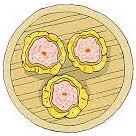
Har gow (steamed crystal shrimp dumpling, 虾饺 xiājiǎo) ^
锅贴 guōtiē (fried pot stickers) ^
Momo (Tibetan dumpling filled with seasoned meat, 馍馍 mómo) ^
汤圆 tāngyuán (boiled sweet sticky rice dumpling) ^
Siu mai (open-faced dumpling, 烧卖 shāomai) ^
小笼包 xiǎolóngbāo (soup dumpling) ^

The China Project editors weigh in on their favorite dumping places:
Kaiser Kuo: Cary, North Carolina, is an unremarkable town in the Research Triangle area of the state. It’s said locally that “Cary” stands for Containment Area for Relocated Yankees, and it’s true that in that town you’re more likely to hear the accents of the Indian subcontinent or of Greater China than the laconic drawls of the local folk. As it’s close to all the tech companies and has lots of newly built houses, it not surprisingly boasts a sizable Chinese population, and where there are lots of Chinese, there are lots of decent Chinese restaurants.
Just last weekend, in celebration of my son’s 12th birthday, my wife and I revisited one of our favorites, called Taipei 101, after the iconic tower in that city. It’s a shabby place in what is putatively “downtown Cary,” but it has consistently delighted us. Their tea-smoked duck was delicious, as was the chashugu beef and the Japanese tofu. I was ready to call it a day when my wife saw a waiter deliver a steamer of xiaolongbao, those delightful soup-filled dumplings, to a nearby table. She flagged down our waitress and ordered two steamers. And as God is my witness, they were mind-blowing. Wa! Hao xian! we both exclaimed on sampling them. The skins were thin, but gluten had conferred on them the requisite structural integrity, and the copious broth sagged from the periphery of the spoons we used to convey them from steamer to smacking lips without spilling forth. They were perfectly spiced: just enough scallion and ginger, neither bland nor too salty. Absolute perfection.
I’ve eaten in every Din Tai Fung in Beijing, in at least three in Taipei, and in San Jose. I’ve had guantangbao in legendary eateries in Luoyang and Kaifeng. And these North Carolina xiaolongbao truly held their own. My wife and I looked at each other upon finishing them off, not quite willing to be the first to say it. But we did. And I shit you not: the best we’ve had, full stop.
Jiayun Feng: People in Shanghai, where I am from, are known for their unfettered love for soup dumplings, or xiaolongbao. It’s fair to say that good places to try soup dumplings are scattered all over the city, but Fuchun Xiaolong really stands out on my list. This critically acclaimed restaurant — there’s no way you can ignore the collection of silver and gold award plaques proudly displayed at the front of the store — is my favorite breakfast spot in the city.
If you’ve sampled enough soup dumplings in your life, you’re probably aware of the many ways these tiny buns could go wrong. The skin can’t be too thick or too thin. There should be enough broth inside for you to take a sip before devouring the whole dumpling, but too much of it might break the structure when you use chopsticks to eat it from a steamer. The filling, be it pork or crab meat, also matters a lot. In Fuchun, these worries are unnecessary, as it brings you xiaolongbao at its finest. (And be sure to check out other items on its expansive menu. Noodles with spicy diced pork is another highlight I strongly recommend.)
Lucas Niewenhuis: Six years ago, Shanghai was my introduction to China, so unsurprisingly I am yet another The China Project staffer with a taste for xiaolongbao. I’ve tried many different spots in New York, but to be honest, I wasn’t fully satisfied until I got the real deal at Nan Xiang Xiao Long Bao in Flushing. As with just about any variety of food in NYC, you can always find fancier versions, but this is a basic, truly authentic version where the flavor-for-dollar is off the charts — just like back in Shanghai.
Jia Guo: I honestly think the world’s best dumplings are made by my mom! Coming from Qingdao, Shandong Province, people in my hometown are fond of all kinds of cooked wheaten food, such as stuffed buns (包子 bāozi), dumplings (饺子 jiǎozi), and fried stuffed buns (炉包 lúbāo). The dumplings we eat in northern China are very different from Shanghainese xiaolongbao. In northern China, dumplings are crescent-shaped, stuffed with different ingredients depending on your taste, such as vegetables, meat, or seafood (my favorite is Spanish-mackerel-stuffed dumplings). Needless to say, the dumplings my mom makes have thin wrapping and more stuffing compared with dumplings from restaurants. I sometimes joke that she’s not making dumplings but buns. The way to cook dumplings in northern China is also different. Instead of steaming, you dump dumplings into hot boiling water for three to four minutes. When the belly of the dumplings face up, that means they’re ready to serve.
Jeremy Goldkorn: Baoyuan Dumpling House is just up the road from my last residence in Beijing. They have a huge range of fillings, from classic flavors like pork and cabbage to a variety of creative combinations, and a large vegetarian selection. They also dye their dumpling wrappers with spinach, carrots, and other vegetables, which is fun but also helpful to identify the contents of each tasty food ball.
Anthony Tao: If you find yourself in Portland, go find The Dump Truck, run by my friends Reid and Julia Barrett, who left Beijing many years ago with the secret for the perfect dumpling. You should probably order the bacon cheeseburger dumpling.

More notes from the writer…
Sophia Yan: I’ve spent an inordinate amount of my time searching for and eating delicious dumplings everywhere (and also an inordinate amount of my time convincing people to let me do stories here and there on dumplings). And like many people, I have a true, undying love for xiaolongbao and guotie. One option that has never failed me for guotie is Taiwanese chain 八方云集 (Bāfāng yúnjí) — they’ve got shops everywhere. The basic pork ones are deliciously greasy, and I could probably scarf down 20 in 20 seconds. I couldn’t possibly pick one favorite for xiaolongbao — Joe’s Shanghai in Queens is a good one, and Din Tai Fung anywhere in the world will never disappoint. But the cutest ones I’ve ever had are Hello Kitty Dumplings in Hong Kong. If your mind isn’t yet blown, they’re also locally sourced and organic! Eat on, dumpling comrades.
UPDATE, 7/17/18: A dispatch from Honolulu: A pro tip for anyone in Oahu and craving dumplings! Tucked away in Makiki, there is a convenience shop inside an apartment building — A&H Kinalau Minimart at 775 Kinalau Place. The folks are Fujianese, and aside from toothpaste and paper towels, they also sell very tasty homemade, hand-wrapped dumplings and wontons. They’re frozen, so you’ll have to cook them at home. But it’s a small ask if you’re on the noble, lifelong quest for eating good dumplings, everywhere. They’ve got basics all the time — i.e., pork and chives, shrimp and cabbage. Become a regular and you can text in for special advance orders. I found this place thanks to a gregarious, friendly Taiwanese Uber driver, and tried their dumplings with a visiting mainland Chinese friend. Many thumbs up!

What are the best-rated dumpling restaurants in China’s first-tier cities? We consulted Dianping for the answer. (Updated as of time of publication; please do double check before seeking out these restaurants!)
Beijing:
Tanshi 谈食
俺的烧鸟 Ǎn de shāo niǎo
Shanghai:
Da Ivo 意大利魔镜餐厅
威海渔 Wēihǎi yúcūn
Guangzhou:
西贝莜面村 Xī bèi yóu miàn cūn
點都德 Diǎn dōu dé
一蔬千味 Yīshūqiānwèi
